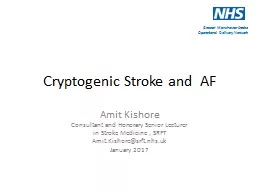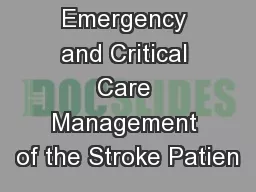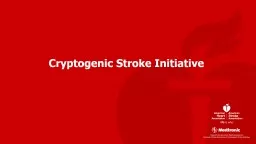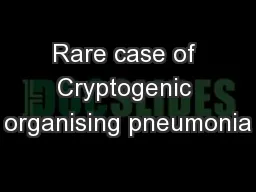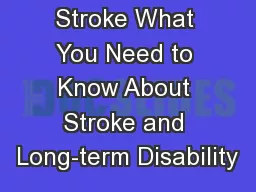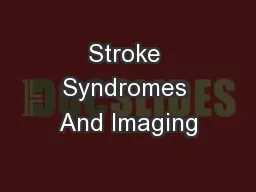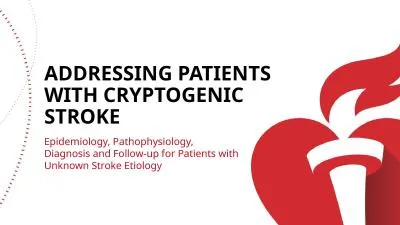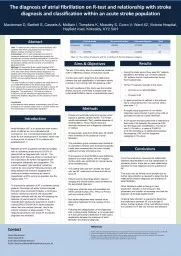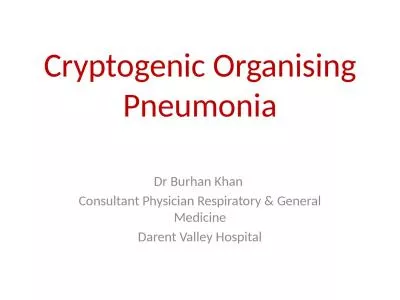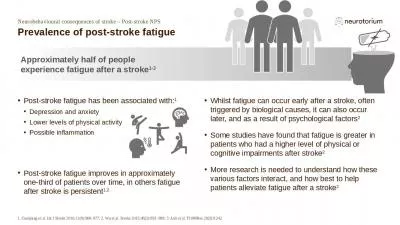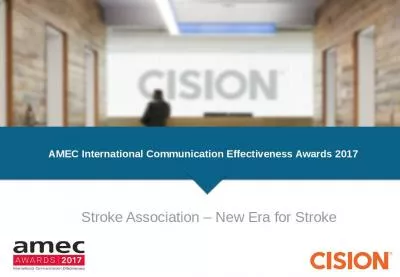PPT-Cryptogenic Stroke and AF
Author : trish-goza | Published Date : 2018-01-08
Amit Kishore Consultant and Honorary Senior Lecturer in Stroke Medicine SRFT AmitKishoresrftnhsuk January 2017 Cryptogenic strokes Brain infarction that is
Presentation Embed Code
Download Presentation
Download Presentation The PPT/PDF document "Cryptogenic Stroke and AF" is the property of its rightful owner. Permission is granted to download and print the materials on this website for personal, non-commercial use only, and to display it on your personal computer provided you do not modify the materials and that you retain all copyright notices contained in the materials. By downloading content from our website, you accept the terms of this agreement.
Cryptogenic Stroke and AF: Transcript
Download Rules Of Document
"Cryptogenic Stroke and AF"The content belongs to its owner. You may download and print it for personal use, without modification, and keep all copyright notices. By downloading, you agree to these terms.
Related Documents

